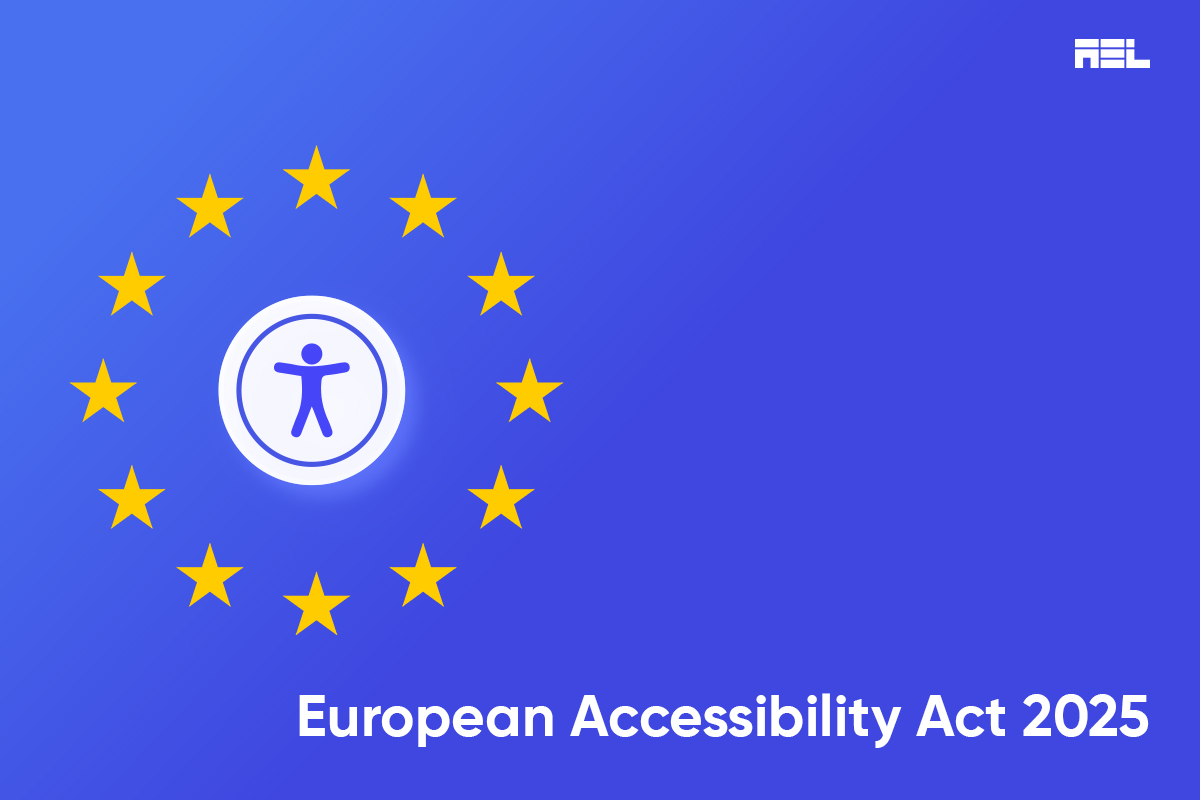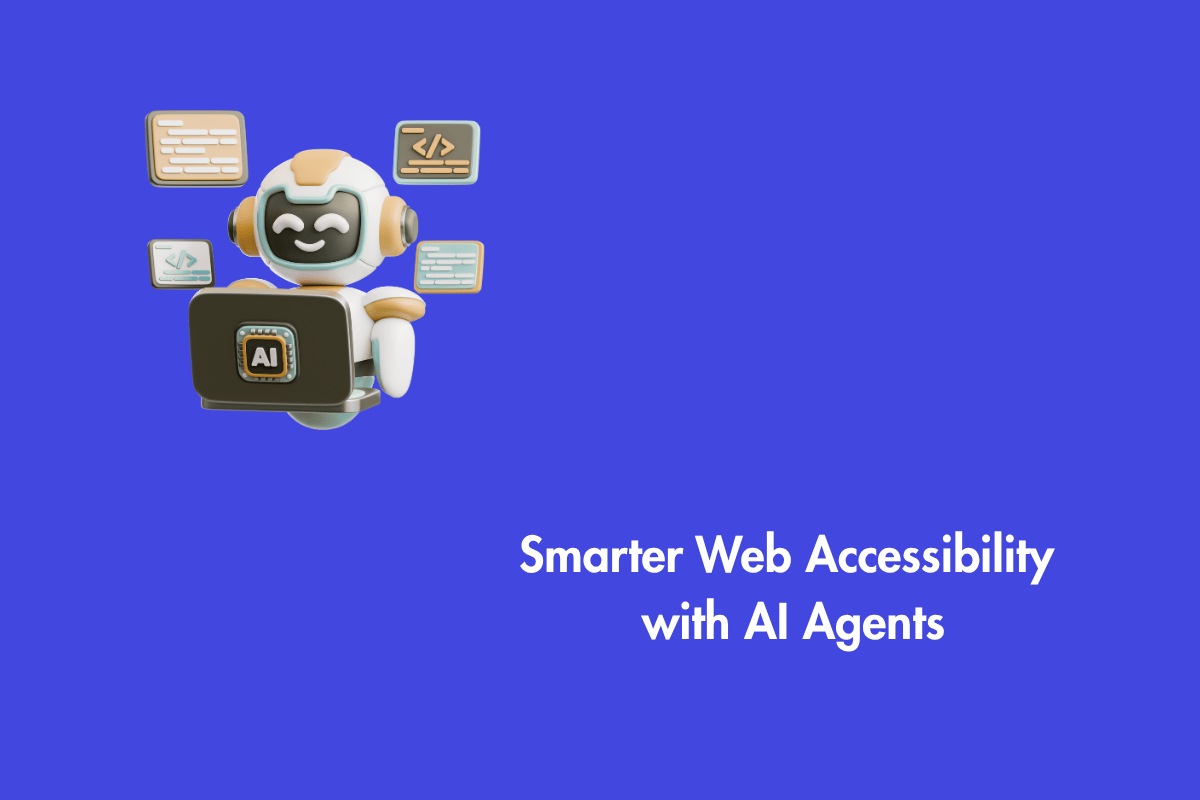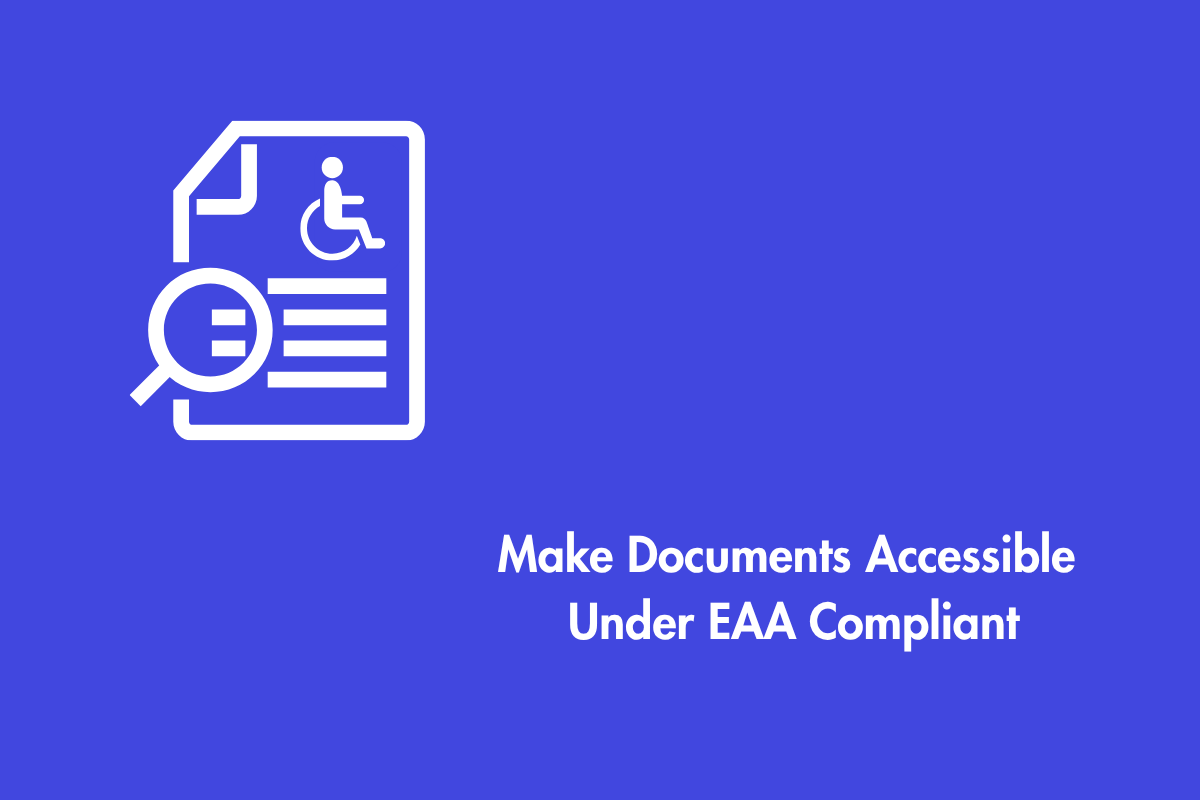The EAA or European Accessibility Act is an important law surrounding accessibility in the European Union. It has been created to ensure that products and services we use every day are accessible for people with disabilities. The Act requires accessibility improvements for increased participation in society. It also benefits businesses through easier trade processes and fosters innovation. By 2025, it seeks to change the business environment and availability of digital services via legislature. In this blog we will discuss the importance of EAA 2025 and why it should be a top priority.
Table of Contents
What is the European Accessibility Act 2025?
European Accessibility Act 2025 (EAA 2025) is the accessibility directive adopted by the European Union. The goal of EAA is to promote an equal digital environment where people with diverse abilities and older adults can engage in the digital economy and society on equal grounds. It outlines certain accessibility demands that these technologies need to meet according to Web Content Accessibility Guidelines (WCAG) 2.1( It is currently undergoing an update to incorporate WCAG 2.2).
However, the compliance doesn’t stop at websites alone. It extends to software, digital content, mobile apps and hardware. A few examples are a broad range of online and digital services and products, such as websites, e-commerce platforms, e-banking, e-books, ticketing systems, ATMs, and others.
Businesses in the EU must update their websites and digital products to comply with the standards established by the EAA 2025. Additionally, UK businesses that operate in the EU in a manner covered by the Act must also enhance their accessibility to meet these new requirements. While previous laws focused mainly on public sector websites, the EAA now extends to include private sector offerings such as:
- E-commerce platforms
- Computers and operating systems
- Payment terminals and self-service kiosks
- Mobile phones and digital communication tools
- Online video streaming and TV services
- Banking services
- Telephone services
- eBooks
However, small businesses with fewer than 10 employees or those who generate less than two million euros in annual revenue are exempt from these requirements. .
Why Does It Matter?
With 135 million people in the EU living with disabilities who face daily challenges in accessing digital products and services, the EAA serves as the European Commission’s solution to address these accessibility issues.
The legislation benefits users with disabilities and a broader range of users, including the elderly and people with varying technological proficiencies. By embracing accessibility, businesses can leverage a larger customer base and improve their brand reputation.
Why should your organization embrace it?
Here are primary reasons to start prioritizing the European Accessibility Act (EAA) 2025
1. Penalties and lawsuits:
Every member state in the EU is required to adhere to the EAA 2025 regulations by June 28, 2025, and failure to do so may result in severe legal penalties and significant fines. Companies that violate accessibility standards could face strict sanctions, potentially harming their brand reputation.
2. User-friendly experience that attracts new customers:
Making digital products and services accessible to all users, improves customer satisfaction and could increase brand loyalty, sales, and market value.
3. Competitive Advantage:
Accessibility is a commercial uniqueness in the digital age. The businesses who give importance to accessibility might be distinguished by displaying their commitment towards inclusion and meeting client demands.
4. Corporate Social Responsibility:
Accessibility promotes social inclusion, equal opportunity, and human rights for individuals with disabilities. An organization’s reputation and customer values could gain from a robust accessibility pledge. A movement for digital accessibility will begin with the EAA in 2025. Accessibility-focused businesses will have an advantage in adjusting to the changing digital era where technology keeps progressing, and accessibility demands become stricter.
How to be Prepared for EAA 2025?
Here’s a detailed guide to help you get ready for the EAA 2025:
1. Conduct a Comprehensive Accessibility Audit
- Evaluate Current Accessibility: Conduct a web accessibility audit to review your digital offerings and determine how they align with EAA 2025 standards. Identify any gaps or areas needing improvement to meet the accessibility benchmarks.
- Seek Expert Guidance: Collaborate with web accessibility specialists who can offer insights into current best practices, common challenges, and innovative solutions. Their expertise will provide tailored recommendations that cater to your business’s specific needs and ensure compliance with EAA requirements.
2. Develop an Accessibility Roadmap
- Integrate Accessibility into Strategy: Allocate a dedicated budget and resources for implementing accessibility features. Adopting a proactive approach helps you incorporate these features systematically, minimizing the need for costly retrofits later.
- Create a Detailed Plan: Develop a comprehensive roadmap for achieving EAA 2025 compliance. This plan should outline the steps needed for implementation, including timelines, allocated resources, and assigned responsibilities for each phase of the process.
3. Implement Ongoing Monitoring and Maintenance
- Regular Updates: Continuously monitor and update your digital offerings to ensure they remain in compliance with EAA 2025 standards. Regular reviews help you stay on top of any changes and maintain accessibility over time.
4. Foster Communication and Education
- Educate Your Team: Build a culture of inclusivity by providing your team with training on web accessibility best practices. Equipping them with the necessary skills and knowledge ensures that accessibility is considered in all content creation and development processes.
- Communicate Your Commitment: Develop a strategy for communicating your organization’s dedication to digital accessibility to employees, customers, and the public. This transparency helps reinforce your commitment and builds trust.
- Engage Stakeholders: Involve relevant stakeholders in the planning and implementation phases to ensure a comprehensive approach and gain valuable input from those affected by accessibility improvements.
By following these steps, you can effectively prepare for EAA 2025, ensuring compliance while fostering an inclusive digital environment for all users.
Conclusion
The EAA aims to enhance accessibility so that individuals with disabilities can participate without barriers in our ever growing digital society. It also offers advantages for businesses by simplifying trade and fostering innovation. Compliance with this law is mandatory for most companies; failure to adhere can result in significant penalties and lawsuits that could harm their social reputation.
The EAA 2025 establishes clear web accessibility standards based on the W3C Web Content Accessibility Guidelines. By complying with this Act, companies can expand their market reach, improve user experience for a more diverse audience, gain a competitive edge, and fulfill their social responsibilities. To prepare for this legislation, organizations should conduct regular accessibility audits, work towards full compliance with the rules, implement best practices according to WCAG guidelines, and maintain ongoing monitoring.
If your organization needs help conducting an audit to get you started with EAA compliance, write to us at info AEL Data.
If you are looking for a quick win, try out our AEL Accessibility Checker – a standalone api with a frontend interface that lets you scan a single page of your website and returns an accessibility score, for free.



